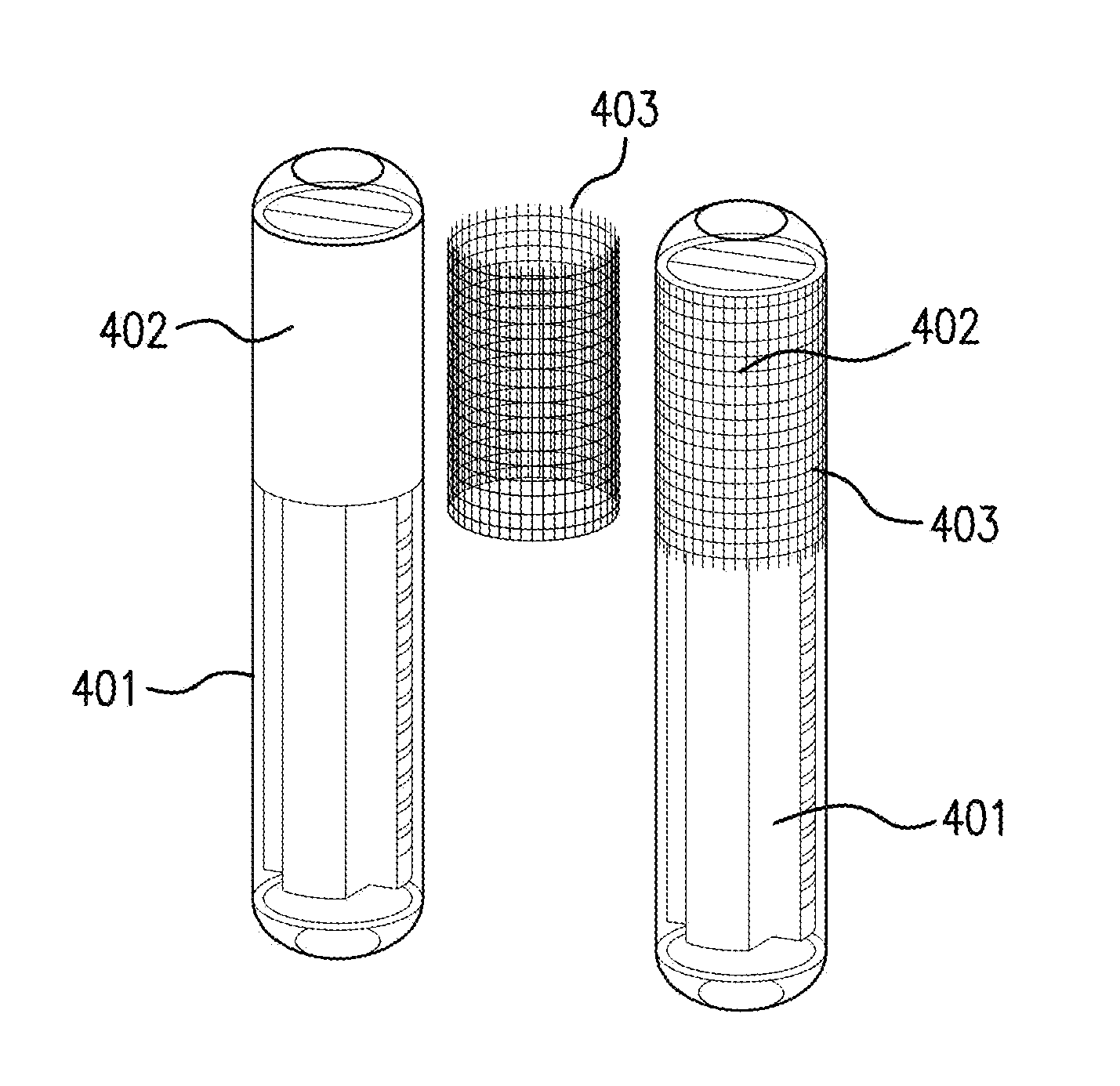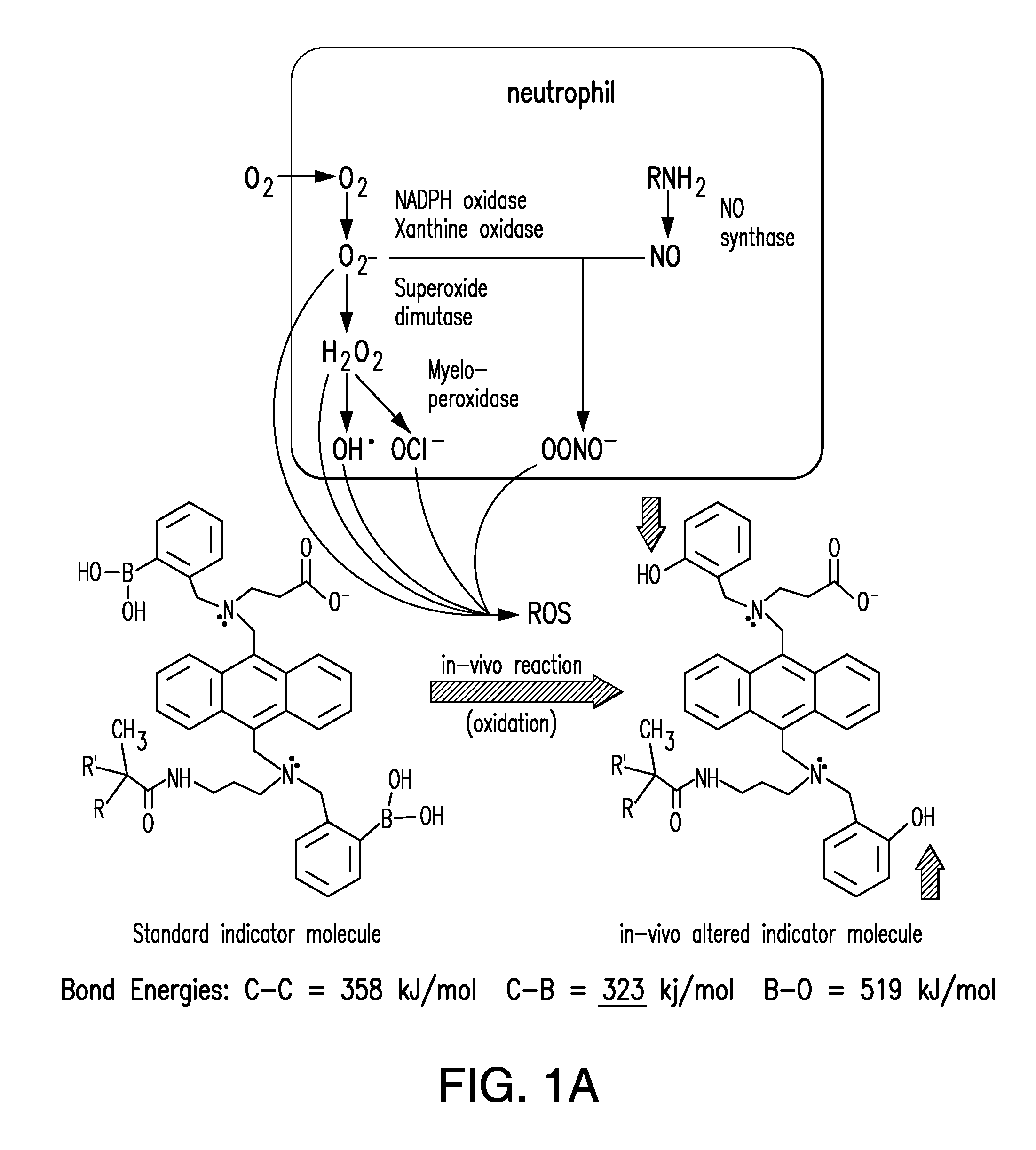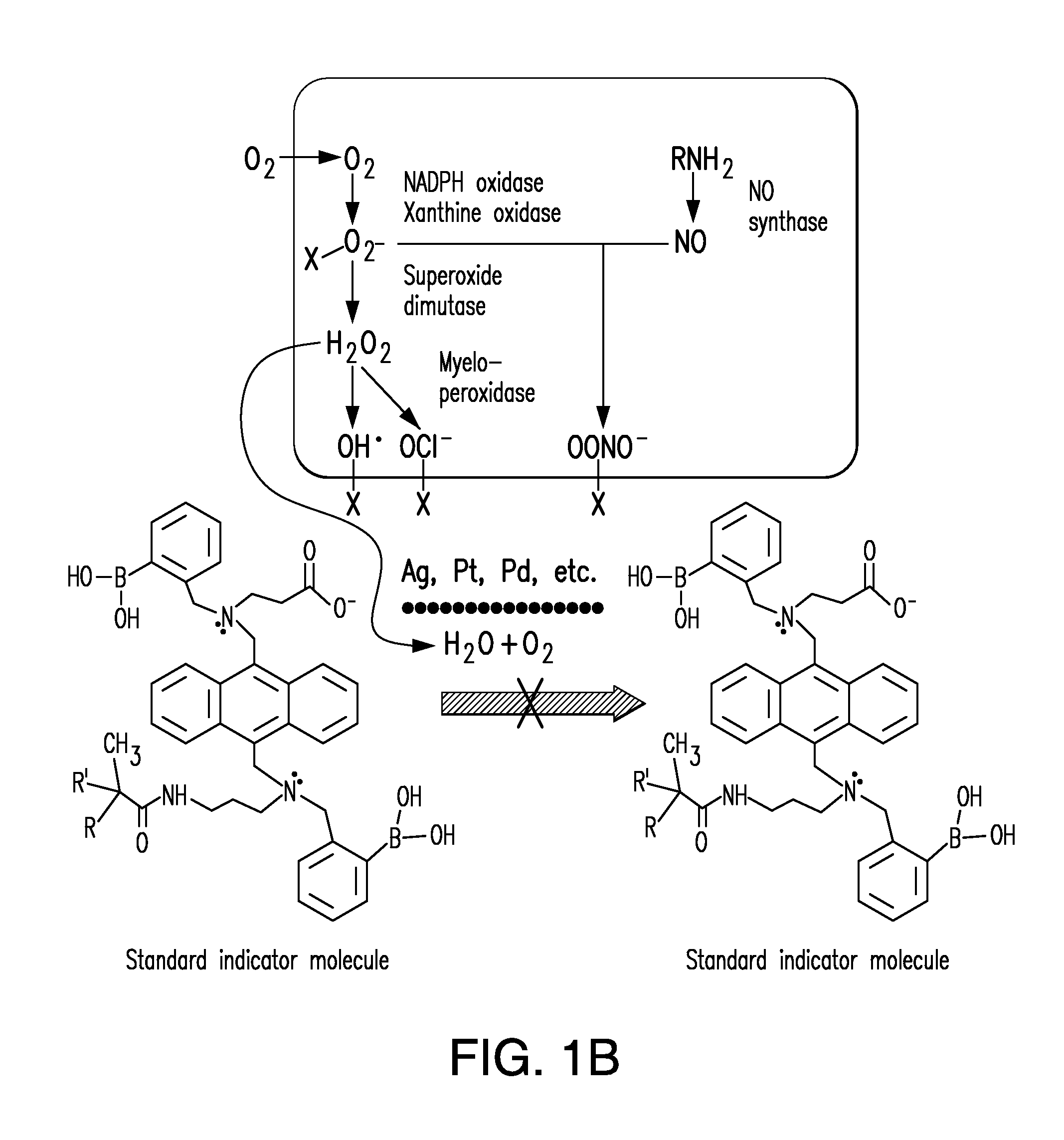Integrated catalytic protection of oxidation sensitive materials
a technology of oxidation sensitive materials and integrated catalytic protection, which is applied in the field of catalytic protection of materials and devices, can solve the problems of reducing the safety and efficacy of the device or material, adding complexity, variability, uncertainty, etc., and reducing the degradation or preventing or reducing the degradation or interference of the implantable device, and reducing the degradation or interference
- Summary
- Abstract
- Description
- Claims
- Application Information
AI Technical Summary
Benefits of technology
Problems solved by technology
Method used
Image
Examples
Embodiment Construction
[0051]The present invention is embodied in an apparatus and / or material, and methods of using such an apparatus and / or material, designed to be implanted into a living body and to perform an in vivo functionality. Such a system may preferably comprise an implantable sensor, and more preferably, an implantable glucose monitoring sensor. Such a sensor may have a smooth and rounded, oblong, oval, or elliptical shape (e.g., a bean- or pharmaceutical capsule-shape). While the preferred embodiment of the device described herein is that of a glucose detection sensor, the present invention is not limited to only implantable glucose sensors, or only implantable sensors, or even limited to only sensors.
[0052]An object of the invention is to protect an implantable sensor, material, or device which may be either destroyed, weakened (in either signal or mechanical strength), or suffer diminished function or utility as a result of oxidation from ROS typically due to inflammation reaction. Such di...
PUM
 Login to View More
Login to View More Abstract
Description
Claims
Application Information
 Login to View More
Login to View More - R&D
- Intellectual Property
- Life Sciences
- Materials
- Tech Scout
- Unparalleled Data Quality
- Higher Quality Content
- 60% Fewer Hallucinations
Browse by: Latest US Patents, China's latest patents, Technical Efficacy Thesaurus, Application Domain, Technology Topic, Popular Technical Reports.
© 2025 PatSnap. All rights reserved.Legal|Privacy policy|Modern Slavery Act Transparency Statement|Sitemap|About US| Contact US: help@patsnap.com



